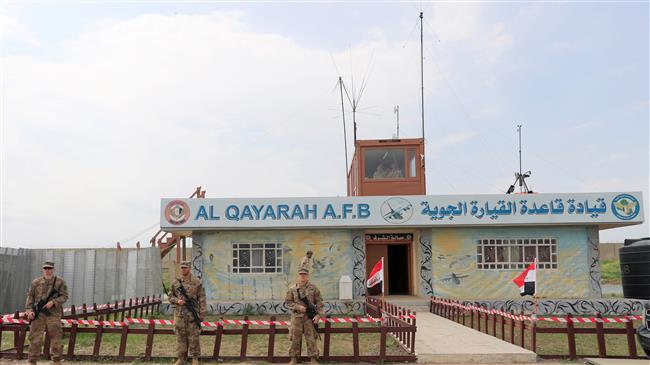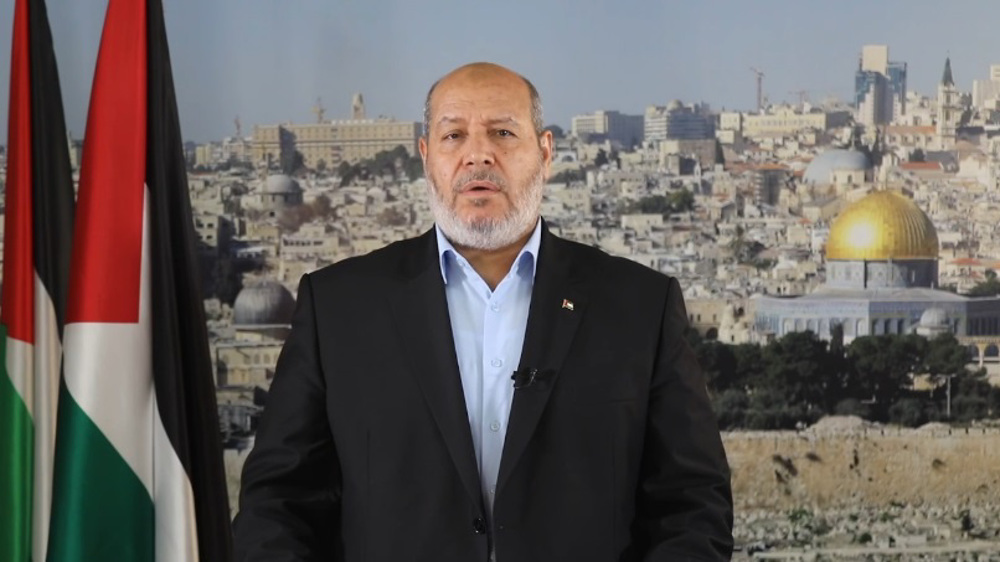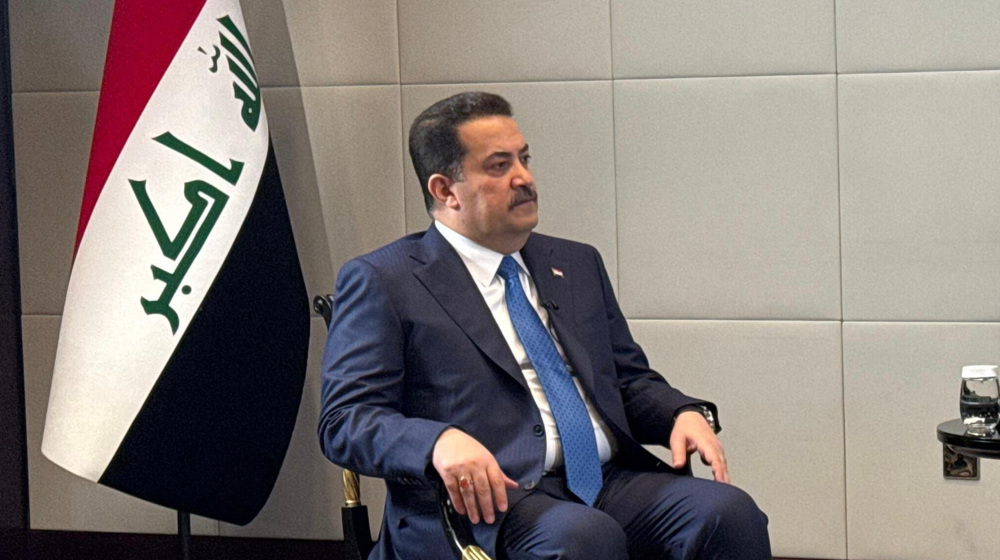Is US readying itself to re-invade and occupy Iraq?
By Robert Inlakesh
Robert Inlakesh is a journalist, writer and political analyst, who has lived in and reported from the occupied Palestinian West Bank. He has written for publications such as Mint Press, Mondoweiss, MEMO, and various other outlets. He specializes in analysis of the Middle East, in particular Palestine-Israel. He also works for Press TV as a European correspondent.
In the wake of the great escalation of January 2020, ultimately resulting in the retreat of United States forces, situated across Iraq, down to a few key bases around Baghdad that now come under regular rocket attack by local anti-occupation resistance groups, American strategic planners are confronted with only two choices: leave Iraq or launch a full-scale shock attack operation in the country's west and subsequent occupation of the area to regain the strategic initiative.
The US finds itself in its current position in Iraq, for the first time since the North Korean army invasion of South Korea in 1950 - an event which nearly threw American troops, at Pusan, into the sea and forced them to fight a protracted defense.
US units in Korea at that time were only relieved after a high-risk amphibious operation led by General Douglas MacArthur saw US and allied forces re-invade the Korean peninsula at Inchon (near the 38th Parallel) in a move that decisively cut into western the flank of the North Korean army’s line of advance.
With their main supply lines severed, North Korean formations were forced into a northwards rout that saw them driven all the way towards the Chinese border.
Although a Chinese intervention in late 1950 would drive the United Nations (US and allies) forces south again (a retreat from which they quickly rebounded back towards the center of the country), never again would the US lose the strategic initiative as it had earlier in the year.
For a military force whose historical doctrine has been to 'attack, attack, attack', America’s current position in Iraq is terribly awkward and uncharacteristic of the usual predicament of total superiority it generally finds itself in.
This predicament is clearly depicted on the ground in Iraq, as shown in ‘picture one’, labelled “Current Situation”, showing the de facto zones of control between United States forces (blue) and Iraqi PMU forces (green) across Syria and Iraq as well as the Kurdistan Regional Government (yellow).

At the present time, Iran maintains a strategic supply line that runs uninterrupted through Iraq’s PMU-dominated south, past the Syrian-Iraqi desert borderlands, up to Deir Ezzor city (held by the Syrian Army) and across the central horizontal depth of Syria all the way to Damascus; this line was established to help resistance forces fight Takfiri terrorists (such as Daesh) and other threats across Iraq and Syria.
US forces monitor this supply line at a number of points across central Iraq and eastern Syria, however are in no position to directly suppress (attack) this vital Iranian line of communication. Israel does on occasion conduct air attacks (which they never officially admit to) against convoys and positions along this supply line, but the vast majority of materiel traffic always gets through.
Furthermore, there are around 9,000 troops (and only a third of them belonging to operations-capable units, the rest being advisors and communication zone troops that cannot defend or attack) currently dispersed between seven bases. Five of the seven US base areas have to be resupplied by air, an expensive method; only the Al-Tanf garrison and Ayn al-Asad garrison can currently be supplied from the ground via Jordan.
The reality of the matter is, that if the US wants to cut-off this line of communication, it has to physically take over the Iraqi-Syrian borderlands and place American troops within the wedge; there is simply no other way it can be done.
The prospect of fully re-occupying Iraq and waging an anti-insurgency against a large potential of its 40 million-sized population is simply not an option. It would require a US army-marines force that numbers in the hundreds of thousands.
However, an opportunity does exist for a still large but less expensive operation to secure the most relevant part of Iraq as far as American-Israeli strategic thinking is concerned - the western borderlands region. It comes with a range of benefits including locking down a sparsely populated region that is ruled by local tribal leaderships that are pro-separation.
In fact, since December 2019, Western mainstream media has leaked reports that the Trump administration (considering a Joe Biden created plan that dates back to 2007) wants to arm the Sunni tribes of western Iraq (the Anbar tribes as they are called) and create a Sunni Arab autonomous region – it should come as no surprise at this point.
But again the problem exists – air power, proxies and intelligence alone is simply not enough. It has to be a large American force that physically wrests control of the area and then maintains an active presence.
The second picture of this report and image shown below, titled ‘U.S. Offensive – Phase I’, is the first stage of a highly probable invasion model that the US is likely considering. It involves a shock attack with, at the very least, a large division-sized (20,000+ troops, excluding contractors) American airborne-motorized force, likely launched out of Saudi Arabia (the launch pad for the previous two Gulf wars).

NOTE: The triangle symbol represents an active zone of operations (which the history of US operations show are generally anchored along a three or four-point sector) whilst the circular shaded icon represents an overall zone of influence; try not to take the defined parameters too literally, they are there to give a ballpark idea.
Overwhelming air support from carrier-based and Persian Gulf nation-based (namely Saudi Arabia, Kuwait and Qatar) US combat aviation could be provided, and is effectively already available.
Formations such as 82d Airborne Division (that already has a brigade sitting in reserve in Kuwait), 101st Airborne Division (prepared to deploy from the continental US within 24 hours and 10th Mountain Division (that has extensive experience in Iraq) are the most likely candidates for such an operation; in the event of an operation, they will likely be reinforced by various high-readiness independent brigades such as the 173d Airborne Brigade Combat Team based in Europe and smaller SOF (special forces) units.
Attacking across mostly open desert terrain with undisputed air support, the initial goals of capturing the middle-lower Euphrates valley cities of Al-Qaim and Ramadi could, without any exaggeration, be achieved within days.
In doing this the US would secure the Syrian-Iraqi border space running from Jordan to Al-Qaim, and, anchoring the eastern extent of the zone of operations at Ramadi, could extend its current Jordan-based supply line all the way to the bases they have at the Al-Omar Oil Fields.
This action alone would cut the Iranian communication line that runs to Damascus, however the problem remains that the US zones of control in Shaddadi (north-eastern Syria) and Erbil (northern Iraq) would remain disconnected from the common operations zone, with a large PMU force north of Al-Qaim wedged between it.
Lastly, by conducting such an operation to seize control of western Iraq, the US will probably have no choice but to abandon its two remaining bases around Baghdad (Taji and Bsmaya) given their proximity to Iran and their being located in the core PMU area of Iraq.
The third picture, featured below, is titled ‘U.S. Offensive – Phase II (Extended)’. This is the second and final stage of this probable invasion model. It involves a second shock attack, North of Al-Qaim, across the Syrian-Iraqi borderlands region towards the city of Mosul.

Again, the US – with overwhelming firepower, greater numbers on the point-of-contact and the initiative of being the attacker – could easily achieve a victory rapid victory; PMU units based between Al-Qaim and Mosul in general would likely have no reasonable option but to conduct a strategic withdrawal towards the center of Iraq.
With the eastern most extent of the operations zone still anchored on Ramadi, the southern extent still based at Al-Rutbah (and the nearby H-3 Base), but now the northern extent reaching to Mosul and the Kurdistan regional border, the US could establish a solid ground supply line that connects the remaining Shaddadi and Erbil bases into a common zone of operations.
By achieving all this, US forces could effectively lock-down the western third of Iraq and yet only have to come into possession of a population only numbering a few million at the most.
From this occupation zone, a manageable quasi-state could be carved out with the help of local pro-separatist tribes which would be armed to form an allied partner militia in an attempt to legitimize the operation.
There can be no doubt that in doing this, the US will have de facto declared war on the Iraqi Army, the Syrian Army as well as the PMU.
It will be a classic conquest and occupation scenario that no amount of media PR-spin could suggest is otherwise.
Whilst a quick initial victory could undoubtedly be achieved by the United States there is simply no calculating the strategic geopolitical consequences of such action unless something like this actually goes ahead.
Furthermore, it will not be a scenario of 20,000+ US troops just sitting back in their bases; they will be at war with at least three well-armed armed entities (far better equipped and more numerous than the insurgent forces they dealt with from 2003 to 2011) – they will have to fight every single day they are present in the occupied space to keep their zone of operations alive.
For the US, it may actually require an even larger force, perhaps corps-sized, just to maintain an occupation over the space it captures than the initial invasion force that takes it.
It can be concluded that this simulated operation is not indefinitely available to the US, there is a window of opportunity for it to take place and that window is fast closing.
The Americans will have to make a decision soon and under the cover of the current Covid-19 pandemic, the opportunity to launch such an offensive operation would enable the Trump administration to essentially hide such a dramatic operation, largely, from the public eye.
(The views expressed in this article do not necessarily reflect those of Press TV.)
Hamas thanks Iran, Resistance Front following achievement of ceasefire in Gaza
'Capitulation': Israeli officials and media concede Gaza defeat as truce unfolds
'Gaza has won': Social media users react to ceasefire with mix of relief, joy
Iran seeks South Korea’s assistance for AI, fiber-optic projects
VIDEO | Iran's 'Eqtedar' (Power) maneuver
Israel hits HTS military target in Syria for 1st time since fall of Assad
VIDEO | Press TV's news headlines
Israel has slaughtered 13,000 students in Gaza, West Bank










 This makes it easy to access the Press TV website
This makes it easy to access the Press TV website